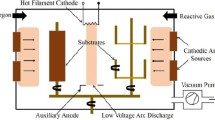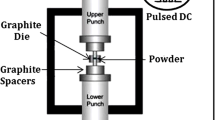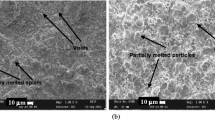Abstract
Tribocorrosion, which is a material deterioration caused by the synergistic effect of corrosion and wear acting together, is encountered in many engineering applications. Ni-based superalloys, which are widely used in chemical, petrochemical and nuclear power industries as well as in hot sections of turbine engines, owing to their excellent corrosion resistance, high strength and capability to retain hardness at elevated temperatures, are subjected to corrosive wear in service conditions. Therefore, an understanding of the tribocorrosion behavior of these superalloys allows choosing the right material for specified applications and predicting the material damage. In this study, the tribocorrosion behavior of Hastelloy C2000, Hastelloy G35 and Haynes 625 was studied using different electrochemical test techniques including open circuit potential (OCP) measurement, potentiodynamic and potentiostatic polarization tests under sliding contact in 3.5 wt% NaCl solution. Scanning electron microscopy (SEM) was employed in order to characterize corrosive-wear damage, and the surface profiles of wear tracks were obtained using a high-resolution surface profilometer for calculating wear loss. Also the metal dissolution caused by corrosive wear was detected using an inductively coupled plasma optical emission spectrometer (ICP-OES). Test results indicated that the tribocorrosion performance of superalloys is affected by their elemental composition and microstructural characteristics, which induce changes in mechanical properties. Haynes 625, which has the highest hardness value owing to decreasing grain size, showed less material volume loss than other superalloys in all tests. However, the protective oxide film on Haynes 625 especially thickened in potentiodynamic tests provided inhibition of excessive metal dissolution. Cathodic protection resulted in decreasing material loss, but on the other hand hydrogen intake was observed on cathodically polarized specimens.









Similar content being viewed by others
References
Landolt, D.: Passivity issues in tribocorrosion. In: Marcus, P., Maurice, V. (eds.) Passivation of Metals and Semiconductors, and Properties of Thin Oxide Layers, pp. 477–487. Elsevier Publications, The Nederlands (2006)
Watson, S.W., Friedersdorf, F.J., Madsen, B.W., Cramer, S.D.: Methods of measuring wear-corrosion synergism. Wear 181–183, 476–484 (1995)
Landolt, D., Mischler, S., Stemp, M.: Electrochemical methods in tribocorrosion: a critical appraisal. Electrochim. Acta 46, 3913–3929 (2001)
Landolt, D.: Electrochemical and materials aspects of tribocorrosion systems. J. Phys. D Appl. Phys. 39, 3121–3127 (2006)
Mischler, S.: Triboelectrochemical techniques and interpretation methods in tribocorrosion: a comparative evaluation. Tribol. Int. 41, 573–583 (2008)
Ponthiaux, P., Wenger, F., Drees, D., Celis, J.P.: Electrochemical techniques for studying tribocorrosion processes. Wear 256, 459–468 (2004)
Yan, Y., Neville, A., Dawson, D.: Tribo-corrosion properties of cobalt-based medical implant alloys in simulated biological environments. Wear 263, 1105–1111 (2007)
Berradja, A., Bratu, F., Benea, L., Willems, G., Celis, J.P.: Effect of sliding wear on tribocorrosion behavior of stainless steels in a Ringer’s solution. Wear 261, 987–993 (2006)
Okazaki, Y.: Effect of friction on anodic polarization properties of metallic biomaterials. Biomaterials 23, 2071–2077 (2002)
Heidersbach, R.H.: Cathodic Protection, Corrosion: Fundamentals, Testing, and Protection, ASM Handbook, vol. 13A, pp. 855–870. ASM International, Metals Park, OH (2003)
Akonko, S., Li, D.Y., Ziomek-Moroz, M.: Effects of cathodic protection on corrosive wear of 304 stainless steel. Tribol. Lett. 18, 405–410 (2005)
Abd-El-Kader, H., El-Raghy, S.M.: Wear-corrosion mechanism of stainless steel in chloride media. Corros. Sci. 26, 647–653 (1986)
Lloyd, A.C., Noël, J.J., McIntyre, S., Shoesmith, D.W.: Cr, Mo and W alloying additions in Ni and their effect on passivity. Electrochim. Acta 49, 3015–3027 (2004)
Bidiville, A., Favero, M., Stadelmann, P., Mischler, S.: Effect of surface chemistry on the mechanical response of metals in sliding tribocorrosion systems. Wear 263, 207–217 (2007)
Minkovitz, E., Eliezer, D.: Grain-size and heat-treatment effects in hydrogen-assisted cracking of austenitic stainless steels. J. Mater. Sci. 17, 3165–3172 (1982)
Acknowledgements
The authors would like to thank Haynes International for the supply of materials and for their helpful technical discussions.
Author information
Authors and Affiliations
Corresponding author
Rights and permissions
About this article
Cite this article
Tekin, K.C., Malayoglu, U. Assessing the Tribocorrosion Performance of Three Different Nickel-Based Superalloys. Tribol Lett 37, 563–572 (2010). https://doi.org/10.1007/s11249-009-9552-1
Received:
Accepted:
Published:
Issue Date:
DOI: https://doi.org/10.1007/s11249-009-9552-1




